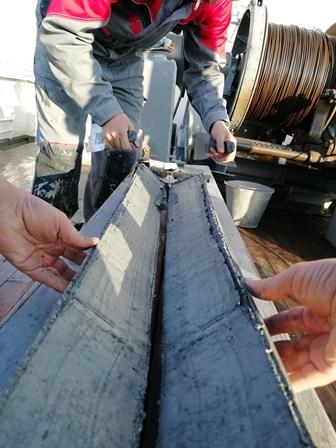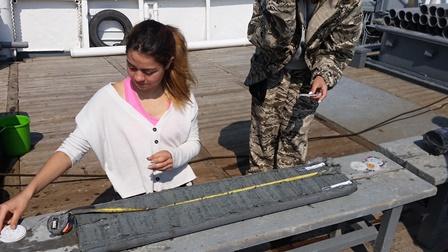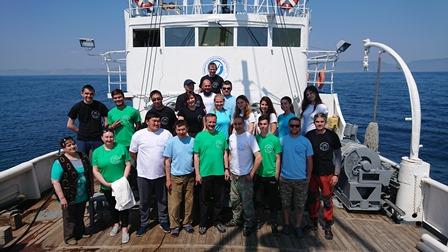4 July. Day 12. Supposedly background day
The day started with a very quiet and sleepy breakfast for everybody. Time to get ready for another sampling day.

Today we completed another profile across the Gydratny fault. No obvious anomalous features can be observed on the seismic profile crossing the fault at this locality. Hence this could be considered as a relative “background value” profile for our Gydratny fault database.

This type of profiles may not seem very exciting but they are extremely useful to quantify and compare the amount of gas content measured in the other profiles intersecting mud volcanoes and gas bearing features.

In the western part of our profile we observed lower gas content based on visual observations from the sediments collected. Even on the fault escarpment, where we were speculating potential gas content increase, we could not observe many of the typical features of fluids degassing. This is possibly related to the fact that recent slumping events characterized this part of the fault escarpment.

To our surprise instead, we discovered that the gas content increases sailing away towards the east from the faults. In one of the cores we even managed to observe a section of one the degassing conduits that we often observe splitting the sections. These conduits have a circular section and when approach the lake floor are characterized by a halo of oxidized sediments. Definitely there is more to investigate in this area to understand the structures in the subsurface that allow this diffused gas migration.

We sampled again the MSU structure. We figured out that MSU is much bigger than we thought and that essentially all the sediments from the structure are gas-saturated even on the flanks of the five pinnacles those erect along the fault escarpment.

At midday we had a “planned pause” (Artur’s expression) and everybody gathered to the main working deck to make a group photo of the cruise participants

The day ended up with two presentations about mud volcanism in Azerbaijan. Safiya showed her results on artificial growth of gas hydrates in mud breccia collected from the Caspian Sea mud volcanoes.

Adriano showed the programme for the coming (12-16 September) Summer School in Azerbaijan organized in the framework of the HOTMUD project.

Text: Adriano and team
Photo: Marina and team